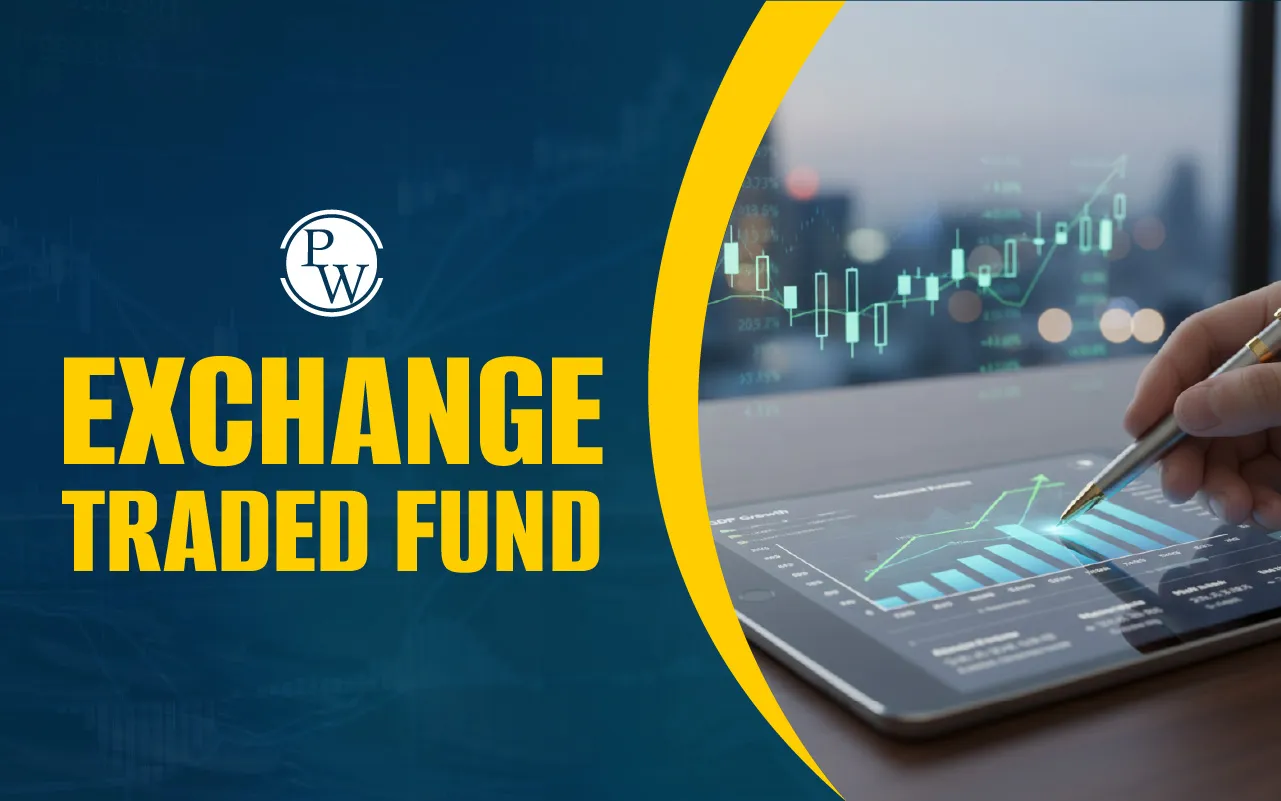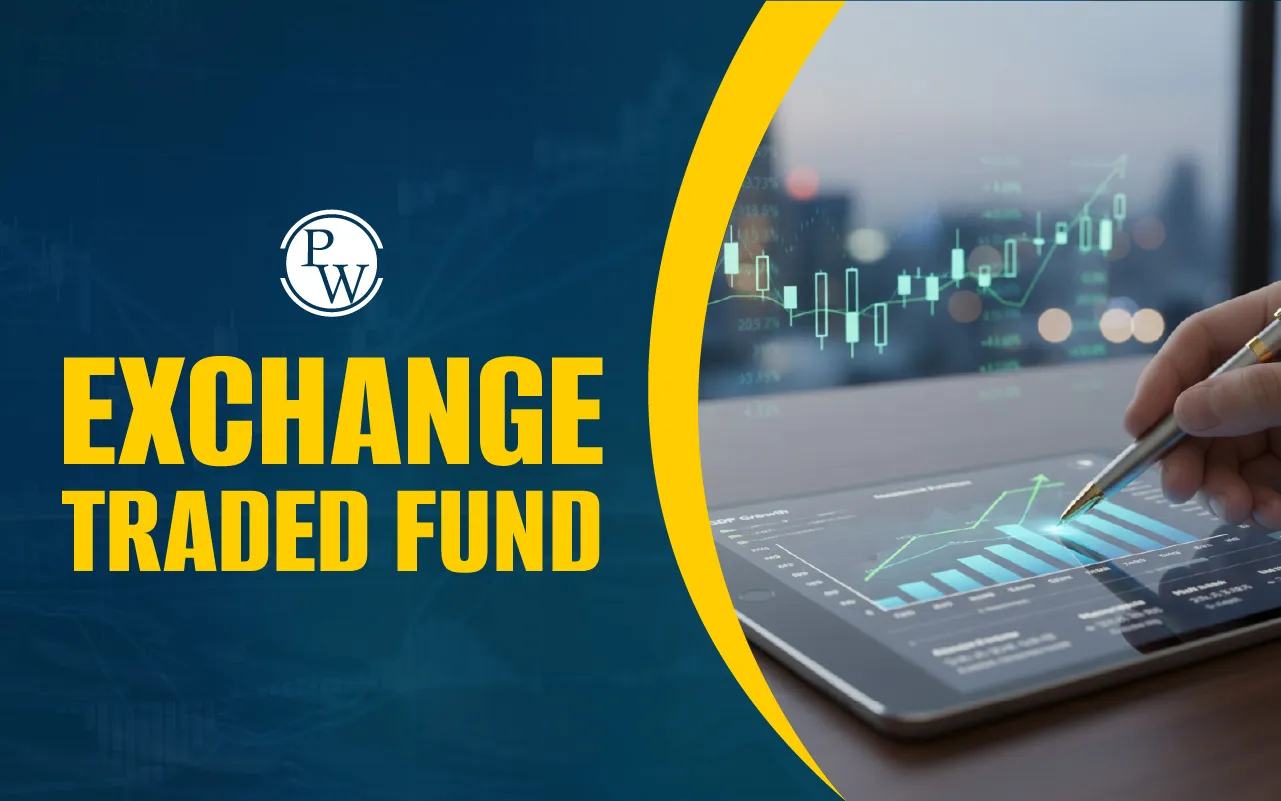

Exchange-Traded Fund is an investment option that functions like a share in the stock market. Investors hold a group of assets together in a single ETF unit rather than buying each asset individually. With this fund, investors can include stocks, bonds, commodities such as gold, and even foreign market assets. This combination simplifies investing and allows monitoring multiple assets within one investment.
Investors can trade Exchange-Traded Fund units live during market hours. This flexibility makes ETFs different from other pooled investment options, which calculate prices only at the end of the day. ETFs offer a clear and affordable way to manage investments while giving investors control over buying and selling according to market conditions.
Exchange-Traded Fund Overview
ETF is a fund that trades like a stock and holds many assets. Investors own units of the ETF, which represent all the assets under it. ETFs can track stock indexes like Nifty or Sensex, bonds, commodities such as gold, or sectors such as technology, healthcare, or energy.
ETF prices are affected during market hours according to asset values and investor demand. ETFs allow investors to see what is inside the fund before making a decision. These funds aim to follow market performance rather than outperform it. Their structure, transparency, and low cost make ETFs a simple choice for investors who want to hold multiple assets in one unit.
|
Exchange-Traded Fund Overview |
|
|---|---|
|
Feature |
Details |
|
ETF meaning |
A fund traded on the stock market that tracks an index or group of assets |
|
Trading Time |
Investors can buy or sell ETF units anytime during market hours |
|
Ownership |
Investors hold units representing all assets within the fund |
|
Pricing |
The price of ETF units changes throughout the trading day |
|
Cost |
ETF fees are usually lower than other actively managed funds |
Types of Exchange-Traded Funds
There are several types of exchange-traded funds that can help investors with different investment goals. Investors can select the type of Exchange-Traded Fund based on their financial goals. Each type of ETF has different levels of risk and price movement, so investors should review objectives before starting to invest.
|
Types of Exchange-Traded Funds |
|
|---|---|
|
ETF Type |
What it Tracks |
|
Index ETF |
Tracks stock market indexes like Sensex and Nifty to follow overall market trends |
|
Bond ETF |
Holds government or corporate bonds for steady returns |
|
Sector ETF |
Focuses on a particular industry such as IT, pharmaceuticals, or energy |
|
Commodity ETF |
Tracks the value of assets such as gold or silver without requiring physical ownership |
|
Global ETF |
Invests in companies or markets outside India to diversify investment options |
How ETF Works?
Investors can learn about how ETF works in a few simple steps. Here, a fund manager collects multiple assets and forms a fund. This fund is divided into units, which are listed on the stock exchange. Further, investors purchase or sell units during market hours using trading apps or brokers.
Exchange-Traded Funds reflect market performance rather than try to beat it. Investors can monitor ETF prices, holdings, and performance to make decisions in real time.
Here is a brief description of how ETF works:
-
The fund manager gathers a basket of assets and combines them into an Exchange-Traded Fund.
-
The fund is divided into units, which investors can buy or sell like regular shares.
-
Investors trade ETF units through a broker or online platform during market hours.
-
The price of the ETF changes throughout the day based on asset value and investor demand.
-
The fund manager ensures the ETF follows the performance of the index or assets it tracks.
ETF vs Mutual Fund
The comparison between ETFs and mutual funds can help investors understand their options. Both ETFs and mutual funds allow investment in multiple assets at once, but they operate differently. ETFs trade like shares with pricing in real time, while mutual funds calculate prices only at the end of the trading day.
Investors purchase ETFs through brokers or trading apps, whereas mutual funds require transactions through fund houses or online platforms. ETFs provide the flexibility to sell anytime during market hours, but mutual funds process orders only once a day. ETFs generally have lower fees because they track the market, while mutual fund charges vary depending on management style.
-
ETFs trade like shares, so investors can buy or sell units anytime during market hours.
-
Mutual funds update prices only once per day, so investors buy or sell at the closing price.
-
Investors purchase ETFs through a broker or online trading platform.
-
Investors purchase mutual funds directly from fund houses or investment apps.
-
ETF fees are generally lower because they follow market indexes.
-
Mutual fund fees vary depending on plan type and fund management style.
Benefits of ETF
Exchange-traded funds provide several benefits for investors. ETFs cost less than actively managed funds. Investors can buy or sell ETF units anytime during market hours. Each ETF unit holds multiple assets, so investors do not need to buy each asset individually. Holdings are usually visible online, which increases transparency. New investors can learn about the benefits of ETFs from the following points:
-
ETFs have lower fees compared to actively managed funds, which helps reduce investment costs.
-
Investors can buy or sell ETF units anytime the market is open. Thus, ETFs provide trading flexibility to investors.
-
Each ETF unit contains multiple assets, so investors can manage investments without buying each asset separately.
-
Investors can view ETF holdings online, making it easier to understand what is in the fund.
-
ETFs provide options in different sectors, commodities, bonds, and global markets for diversified investment.
How to Invest in ETFs?
Investors start by opening a trading and demat account. These accounts allow buying and holding ETF units digitally. After setting up accounts, investors can search for ETFs, check prices, review past trends, and compare holdings. Here, orders are placed like stock trades.
After purchase, ETF units appear in the portfolio. Investors can hold the units long-term or sell them during trading hours. Many investors start with small amounts to learn about price movements and ETF performance. The process is fully online, and no offline forms are needed after account setup.
